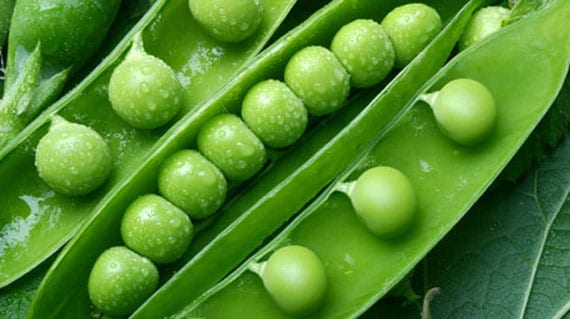
With the month of October, following our crop calendar, we are fully into the pea planting season. This edible seed belongs to the family of the legumes. It is one of the oldest vegetables in European culture. Peas have been found in 9.000-year-old archaeological excavations. The ancient Greeks and Romans cultivated and consumed them regularly.
There are different varieties, all of them are annual. For him flowerpot, better choose those of kill lowEither with a round pod, from which the peas are extracted, or the so-called snow peas, with a tender pod, which is collected when the peas are still tender inside and is eaten whole. Those with tall plants can measure up to 3 meters. Those of low forest, do not get to measure more than one meter. That is why perhaps they are the most appropriate for our urban gardens.
The pea is not a friend of extreme temperatures, it does not like the heat of summer or frost in winter, it develops very well with moderate cold and humid. If it freezes in your locality, it is convenient to protect the plants with plastic.
La sowing The pea can be done directly or by plant. You just have to be careful to soak the seeds the night before. Keep in mind that it is a climbing plant, so it will need tutors to guide its growth. It is not necessary to tie the plant to the tutor, as it is a climber and its tendrils will become entangled in it as it grows.
It is not very productive and needs a lot floor space (50 x 50 cm). In small pots it is better to put 3 or 4 seeds in a centered hole, about 4 cm. Of the surface. In planters, you have to try to distribute them according to their length, leaving 50 cm. between planting holes. We will put 3 or 4 seeds in each hole, of which, as always, when growing, we will remove the worst-looking seedlings, leaving only one of them. Until the seeds germinate, the surface must be watered daily.
Regarding irrigationIt is not too demanding, it even prefers copious and spaced waterings, one per week is enough, but above all, waterlogging must be avoided. However, when the first flowers open, we will water them more regularly, especially in dry weather, so that the substrate remains moist.
We will know that the time has come for harvest (between 3 and 4 months from sowing), when, touching the pods, you can see the swollen grains, but not too large, that still have space in the pod. They are collected using one hand to hold the stem and the other to pull the pod. When we collect the first pods, it is important to be regular in watering, not neglecting the humidity of the substrate, to stimulate the growth of new ones.
Regarding the cultivation associations, works well with carrot, radish, cabbage, and lettuce. It should be avoided that they coincide with vegetables from the same family such as beans and beans. And the coincidence with garlic or onion is detrimental.
Although it is not usually affected by pests, aphid, mildew and powdery mildew they are the most common.
More information - October Crop Calendar, Aphid, The most common mushrooms in the urban garden, Powdery mildew